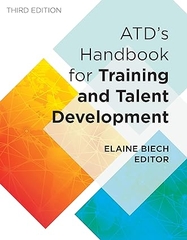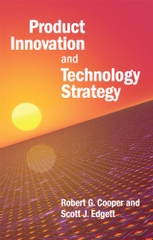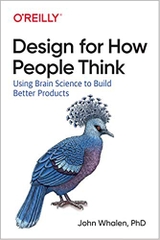-
-
-
Tổng tiền thanh toán:
-
-
Thông tin
-
Tìm sách theo yêu cầu
Book Description
Publication Date: September 7, 2006 | ISBN-10: 0321437292 | ISBN-13: 978-0321437297 | Edition: 1
Innovation Through Understandingsm
The toughest part of innovation? Accurately predicting what customers want, need, and will pay for. Even if you ask them, they often can’t explain what they want. Now, there’s a breakthrough solution: Innovation Games. Drawing on his software product strategy and product management consulting experience, Luke Hohmann has created twelve games that help you uncover your customers’ true, hidden needs and desires.
You’ll learn what each game will accomplish, why it works, and how to play it with customers. Then, Hohmann shows how to integrate the results into your product development processes, helping you focus your efforts, reduce your costs, accelerate time to market, and deliver the right solutions, right from the start.
- Learn how your customers define success
- Discover what customers don’t like about your offerings
- Uncover unspoken needs and breakthrough opportunities
- Understand where your offerings fit into your customers’ operations
- Clarify exactly how and when customers will use your product or service
- Deliver the right new features, and make better strategy decisions
- Increase empathy for the customers’ experience within your organization
- Improve the effectiveness of the sales and service organizations
- Identify your most effective marketing messages and sellable features
Innovation Games will be indispensable for anyone who wants to drive more successful, customer-focused product development: product and R&D managers, CTOs and development leaders, marketers, and senior business executives alike.
Editorial Reviews
About the Author
Luke Hohmann is the founder and CEO of Enthiosys, Inc., a Silicon Valley-based software product strategy and management consulting firm. Luke is also the author of Beyond Software Architecture: Creating and Sustaining Winning Solutions and Journey of the Software Professional: A Sociology of Software Development. Luke graduated magna cum laude with a B.S.E. in computer engineering and an M.S.E in computer science and engineering from the University of Michigan. While at Michigan he studied cognitive psychology and organizational behavior in addition to data structures and artificial intelligence. He is a former National Junior Pairs Figure Skating Champion and American College of Sports Medicine certified aerobics instructor. A member of the PDMA, ACM, and IEEE, in his spare time he enjoys roughhousing with his four kids, his wife’s cooking, and long runs in the Santa Cruz mountains (because he really does enjoy his wife’s cooking).
Excerpt. © Reprinted by permission. All rights reserved.
Preface
Innovation Games are fun ways to collaborate with your customers to better understand their needs. You can use them to discover new business opportunities, drive strategy and product road map decisions, improve the effectiveness of sales and service organizations, fine-tune marketing messages, and create more intimate, durable relationships with your customers. You can also use them to better understand the people that you care about the most, from your family and friends to close business colleagues. To illustrate, here are ways some companies and people have used Innovation Games:
Figure 0.1 Innovation Games can be used to accomplish many kinds ofgoals.
Understanding complex product relationships—When Wyse Technologies, Inc. wanted to gain a better understanding of how their customers perceived the business and technical relationships between the products and services provided by Wyse and those provided by other technology providers, they played Spider Web with a select group of customers at their Customer Advisory Board meeting.
Understanding product evolution—Rally Software Development had a more focused objective: they wanted specific feedback on how to prioritize features in upcoming product releases. After considering Buy a Feature, 20/20 Vision, and Prune the Product Tree, three games that help prioritize features, they ultimately chose Prune the Product Tree as the game that allowed them to best capture customer feedback on their development plans.
Understanding sales needs—QUALCOMM used Product Box in an internal sales training exercise to identify critical customer success factors and relate these to product benefits. Another company, Ticketmaster, used Buy a Feature in an internal sales meeting to prioritize the features that the sales team felt would help them accomplish their objectives.
Identifying areas for improvement—Aladdin Knowledge Systems, Inc., QUALCOMM, and Precision Quality Software have all used Speed Boat to identify key areas for improvement in their product and service offerings.
Prioritizing market needs—Emerson Climate Technologies provides the Intelligent Store, a broad and comprehensive architecture that combines unique equipment, software, and services to solve food safety, energy management, and facilities management needs. Emerson used Spider Web, Speed Boat, and 20/20 Vision at their 2006 Technology Advisory Council meeting to better understand market needs relative to all aspects of the Intelligent Store.
Understanding hidden desires—Andre Gous's stepdaughter Karen was having trouble finding just the right used car. Andre runs Precision Quality Software and is a recognized expert on various software requirements engineering techniques. Andre tried using traditional requirements engineering to help her clarify her objectives. Unfortunately, after 45 minutes, they were no closer to the goal of defining her ideal car, and Karen was starting to become a little frustrated with the process. Andre tried Product Box, and in short order they had identified exactly what Karen was looking for in her "new" used car (you can read the entire story at the Innovation Games forum, http://www.innovationgames.com).
Figure 0.2 With a little imagination, Innovation Games can be used in countless situations.
Creating strategic plans—SDForum is the leading Silicon Valley not-for-profit organization providing an unbiased source of information and insight to the technology community for 20 years. Laura Merling, Executive Director of SDForum, used Remember the Future to create a five-year vision for how their organization will evolve to meet the needs of new technology entrepreneurs in Silicon Valley and around the world.
These stories illustrate the broad range in which people like you, for professional and personal reasons, are using Innovation Games. You can use Innovation Games to accomplish these and other goals. If you use these games, you'll come to understand what your customers really want. You'll have fun doing it. Perhaps more importantly, they'll have fun doing it. Armed with this understanding, you'll be able to create the breakthrough innovative products that are the foundation of lasting success. This book will show you how.
How This Book Is Organized
This book is organized into three parts.
Part One: The Why and the How of Innovation Games
Part One provides a comprehensive overview of Innovation Games. Starting with why you might want to play them in the first place, it will cover some of the different ways in which you can use the games and answer some of the common questions we get from people who are considering the games. Part One describes an easy-to-use process for selecting, planning, playing, and postprocessing the results of a game in ways that benefit you and your customers. This process has been used successfully in many games. At the end of Part One you'll have the foundation you need to move forward with one or more specific games.
Part Two: The Games
In Part Two you'll learn the details about each game, from "what makes the game work" to specific advice on planning, playing, and postprocessing the results. It is helpful to start by briefly skimming each game, making notes on how you might apply it. You'll probably find that one or two games catch your eye more than the others. This is not an accident; these are the games most likely to help you address your most pressing concerns. Go back to these games and carefully read each one in detail. When you're finished, you should have a good understanding of how these games can meet your needs and how to modify the general process described in Part One to put them in action. Along the way, by reading about how other companies have used them, you'll gain insight and inspiration about how you can apply these games.
Part Three: Tools and Templates
Part Three is designed to help you use Innovation Games by providing you with a variety of tools and templates to plan, play, and process the results of a game. It includes such things as sample invitation letters, general materials and supply checklists, advice on preparing event venues and facilitating the games, and frequently asked questions.
Forum for Readers, Game Players, and Facilitators
In addition to this book, the people who use Innovation Games have found creative ways to extend them and are sharing their experiences with others at http://www.inno...
Product Details
- Paperback: 192 pages
- Publisher: Addison-Wesley Professional; 1 edition (September 7, 2006)
- Language: English
- ISBN-10: 0321437292
- ISBN-13: 978-0321437297
- Product Dimensions: 9 x 8 x 0.5 inches
- Shipping Weight: 12.8 ounces (View shipping rates and policies)
- Average Customer Review: 4.8 out of 5 stars See all reviews (25 customer reviews)
- Amazon Best Sellers Rank: #344,105 in Books (See Top 100 in Books)
Most Helpful Customer Reviews
14 of 16 people found the following review helpful
4.0 out of 5 stars find the unknown unknowables September 12, 2006
Format:Paperback
There's an amusing but cogent passage in this book, where Hohmann talks about things you know, things you know you don't know, and things you don't know you don't know. This exactly echoes what Donald Rumsfeld said recently about knowables, unknown knowables and unknown unknowables. Rumsfeld was talking about terrorist threats against the US, while Hohmann is describing your company's marketplace. The main purpose of this book is to try to move items from the category of things you don't know you don't know into the category of things you know you don't know. As Hohmann points out, in the latter, you actually have some knowledge about whatever that subject is. You can then apply other methods to reduce your ignorance about the subject.
The Innovation Games is a methodology for getting your customers to role play their experiences, in a search for what they might want in a future improved product. Or for deficiencies in your current products. There is nothing in this approach to limit it to high technology products or services. It can be germane to any industry.
Perhaps the main appeal of Innovation Games is that it can engender more creative input and feedback from your customers. It goes beyond asking them to fill out survey forms. These are often constrained by you having to devise the questions. And for the unknown unknowables, you simply will not be able to formulate questions about those. Beyond giving space for the respondent to write any other concerns she might have. The problem with the latter is that many respondents might also be unaware of those unknowables. The Innovation Games is a process whereby sometimes these hard unknowables can be made explicit in the multiplayer role playing. No guarantees. But sometimes it can be worth the effort.
The Innovation Games is a methodology for getting your customers to role play their experiences, in a search for what they might want in a future improved product. Or for deficiencies in your current products. There is nothing in this approach to limit it to high technology products or services. It can be germane to any industry.
Perhaps the main appeal of Innovation Games is that it can engender more creative input and feedback from your customers. It goes beyond asking them to fill out survey forms. These are often constrained by you having to devise the questions. And for the unknown unknowables, you simply will not be able to formulate questions about those. Beyond giving space for the respondent to write any other concerns she might have. The problem with the latter is that many respondents might also be unaware of those unknowables. The Innovation Games is a process whereby sometimes these hard unknowables can be made explicit in the multiplayer role playing. No guarantees. But sometimes it can be worth the effort.
4 of 4 people found the following review helpful
5.0 out of 5 stars Very useful, varied and practical December 13, 2010
Format:Paperback
I run user experience research for one of the big tech firms in Seattle. I've been using this book recently to bring some more creativity and variety to the activities we do in our studies. I've found the games are really practical, and there is just-enough material on each to get going. So I'd definitely recommend it.
However, if someone isn't already familiar with running games like this, then they may need quite a bit of practice first. Since, the actual instructions are only part of the story: setting the right mood in the room is important, as is one's manner as a facilitator. The best way of learning this is practice, and working with someone who is already good at this and learning from them. Yet, as book go, there is another book I recommend on the subject: Moderating to the Max, and the Culture Code.
However, if someone isn't already familiar with running games like this, then they may need quite a bit of practice first. Since, the actual instructions are only part of the story: setting the right mood in the room is important, as is one's manner as a facilitator. The best way of learning this is practice, and working with someone who is already good at this and learning from them. Yet, as book go, there is another book I recommend on the subject: Moderating to the Max, and the Culture Code.
2 of 2 people found the following review helpful
5.0 out of 5 stars A must read for innovation leaders September 3, 2010
Format:Paperback|Verified Purchase
I like this book because it's full of practical tools on discovering your customer's needs, wants, and likes. As an agile innovation consultant, I have used several techniques from this book to help customers describe their most important features (product box) and then prioritize them (buy a feature). The author emphasizes the need for thorough preparation and documentation while making the business process seem fun like a game.
I highly recommend this book to anyone who is trying to draw out customer requirements. There are even some techniques for discovering the killer features that will set your product apart from your competitors' (Give them a hot tub). I plan on using these techniques in upcoming customer engagements especially for helping them with strategic direction and product requirements gathering.
It's a must for any innovation professional.
Armond Mehrabian
amehrabian@portofinosolutions.com
Twitter: @armond_m
I highly recommend this book to anyone who is trying to draw out customer requirements. There are even some techniques for discovering the killer features that will set your product apart from your competitors' (Give them a hot tub). I plan on using these techniques in upcoming customer engagements especially for helping them with strategic direction and product requirements gathering.
It's a must for any innovation professional.
Armond Mehrabian
amehrabian@portofinosolutions.com
Twitter: @armond_m
XEM CHI TIẾT TẠI AMAZON.COM
- Thông tin chi tiết
- Mục lục
- Đánh giá & bình luận của người mua
- Những cuốn sách cùng chủ đề hoặc có liên quan
Tại web chỉ có một phần nhỏ các đầu sách đang có nên nếu cần tìm sách gì các bạn có thể liên hệ trực tiếp với Thư viện qua Mail, Zalo, Fanpage nhé
Đăng ký nhận tin qua email
Hãy đăng ký ngay hôm nay để nhận được những tin tức cập nhật mới nhất về sản phẩm và các chương trình giảm giá, khuyến mại của chúng tôi.












